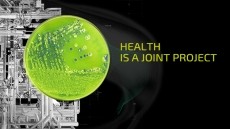Elsevier builds electronic notebook for lab
an electronic notebook (ELN) designed for the life sciences
industry and which will significantly reduce cycle time in
biopharmaceutical R&D, writes Wai Lang Chu.
Biopharma researchers engaged in experiment planning and data capture/analysis supporting parallel synthesis, single- and multi-step reactions are increasingly demanding an electronic laboratory data capture, report generation, auditing, tracking and storage solution. The ELN will support FDA- and OSHA-mandated Good Manufacturing and Good Laboratory Practices, as well as 21 CFR Part 11 compliance.
The biotechnology sector produces vast amounts of data, primarily due to highly automated combinatorial techniques for drug discovery. The current industry approach to managing the scientific processes is to use "electronic notebooks." An electronic notebook is the electronic equivalent of a paper research notebook.
Electronic notebook software typically allows for collaborative work so that scientists in different remote locations may collaborate on scientific tasks by sharing common records containing ideas, data, and events of joint experiments and research programs.
The >ELN, which is built on MDL Isentris technology, offers productivity benefits such as streamlining workflows, automating repetitive tasks, documenting discovery history for patent disclosure and defence and leveraging past work. In addition, an integrated ELN ensures that information captured in the system can benefit everyone in an R&D organisation.
One difficulty with most general purpose electronic notebooks is its lack of a standard mechanism to trace data related to a experiment within an electronic notebook environment. Also, the primary application of electronic notebooks lies in the recording of experiments, with limited attention to other aspects of laboratory management.
The MDL Isentris discovery informatics platform could be a potential solution to this as it offers the technology framework for building ELNs. The first ELN release will address the needs of discovery scientists, particularly in organic synthetic chemistry, with a scope that includes authentication, sign/witness, audit, notebook record repository and reporting services with extensive workflow customisation capabilities.
The first release will integrate MDL structure and reaction registration services. The first ELN will also support collaborative searching of hosted content via the DiscoveryGate platform for scientific research. Subsequent ELN releases will provide additional functionality supporting development chemistry and biology workflows.
The ELN, which will support FDA- and OSHA-mandated Good Manufacturing and Good Laboratory Practices, as well as 21 CFR Part 11 compliance, is due to make an appearance in 2006.


















